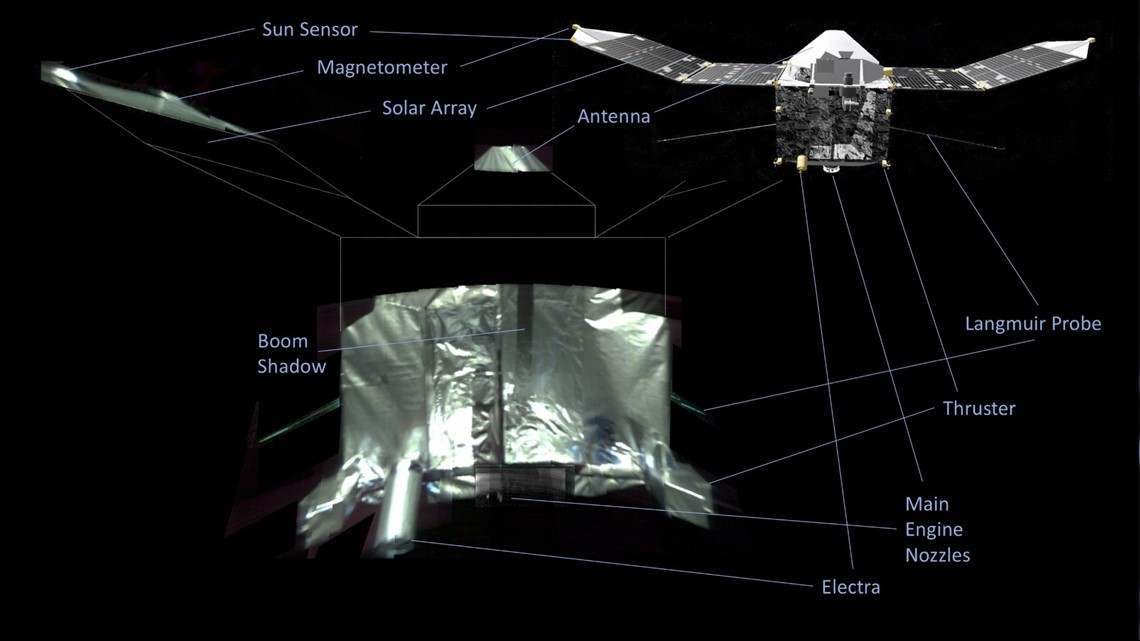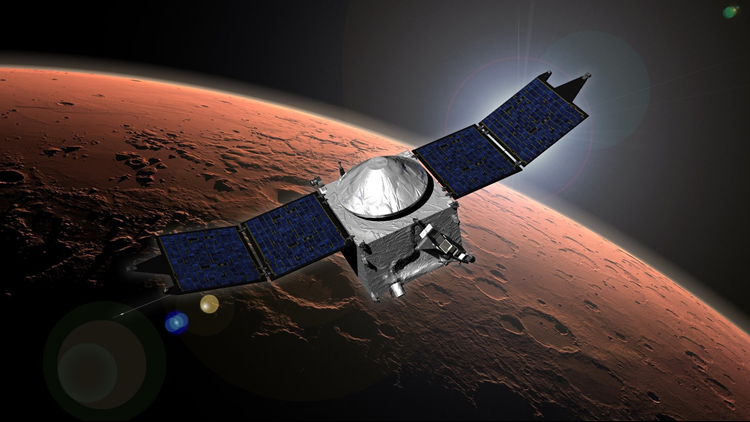KUSA — An over-achieving probe orbiting Mars took a ‘selfie’ to mark its accomplishments.
It’s called the Maven, and it was built in Colorado at Jefferson County-based Lockheed Martin.
It’s the first ever ultraviolet selfie by an orbiting space probe. It was assembled using 21 different images taken by its Imaging Ultraviolet Spectrograph (IUVS) instrument that normally looks at ultraviolet emissions from the Martian upper atmosphere.


The IUVS instrument was built at the Laboratory for Atmospheric and Space Physics (LASP), at the University of Colorado-Boulder. It's mounted on a platform at the end of a 1.2-meter boom, its own ‘selfie stick’.
The selfie is a bit incomplete because its arm, or selfie stick, is too close to the school bus size spacecraft.
Maven's original one-year mission was to measure the atmosphere of Mars and help scientists understand what caused it to be depleted.
Beyond that, Maven’s scheduled responsibility was to support the rovers on the planet, and to relay their information to earth.
The rovers on the planet’s surface have taken selfies before, but scientist never would have seen them on earth without Maven’s transmitter relaying the images.
Scientists have been finding extracurricular work for Maven to do.
In three years of extra work, Maven has discovered proton auroras, witnessed a global dust storm on Mars (something scientists witnessed for the first time) and researched terraforming possibilities on the Red Planet.
Scientistis previously thought there is enough carbon dioxide and other elements trapped in Mars’s ice caps, and regolith, to terraform the planet, which means to repair its atmosphere and make it habitable to humans. But Maven’s data concluded that terraforming Mars is not possible with our current technology.
To mark Maven's impressive accomplishments through 4 years of science, the team allowed a little vanity with this selfie.
“It’s a good example of where sort of science and art intersect,” said Justin Deighan, a research scientist with LASP and assigned to the Maven mission.“It was a lot of fun to do, and hopefully it will touch people in a special way, and kind of give them a feel for, you know it’s fun to do science. We’re not too serious, we like to do cool things.”



